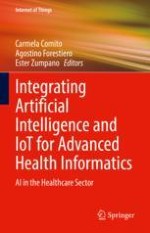2022 | OriginalPaper | Chapter
Enhancing EEG-Based Emotion Recognition with Fast Online Instance Transfer
Authors : Hao Chen, Huiguang He, Ting Cai, Jinpeng Li
Published in: Integrating Artificial Intelligence and IoT for Advanced Health Informatics
Publisher: Springer International Publishing
Activate our intelligent search to find suitable subject content or patents.
Select sections of text to find matching patents with Artificial Intelligence. powered by
Select sections of text to find additional relevant content using AI-assisted search. powered by
